
Old-time music is a genre of North American folk music. It developed along with various North American folk dances, such as square dancing, clogging, and buck dancing. It is played on acoustic instruments, generally centering on a combination of fiddle and plucked string instruments, most often the banjo, guitar, and mandolin. The genre is considered a precursor to modern country music.
Western swing music is a subgenre of American country music that originated in the late 1920s in the West and South among the region's Western string bands. It is dance music, often with an up-tempo beat, which attracted huge crowds to dance halls and clubs in Texas, Oklahoma and California during the 1930s and 1940s until a federal war-time nightclub tax in 1944 contributed to the genre's decline.
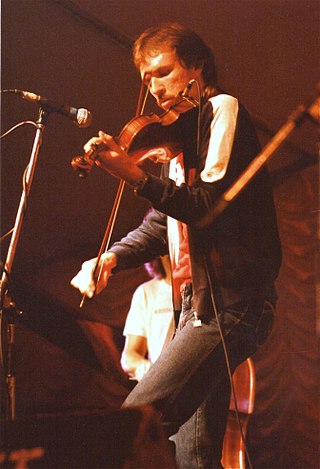
Mark O'Connor is an American fiddle player and composer whose music combines bluegrass, country, jazz and classical. A three-time Grammy Award winner, he has won six Country Music Association Musician Of The Year awards and, was a member of three influential musical ensembles; the David Grisman Quintet, The Dregs, and Strength in Numbers.
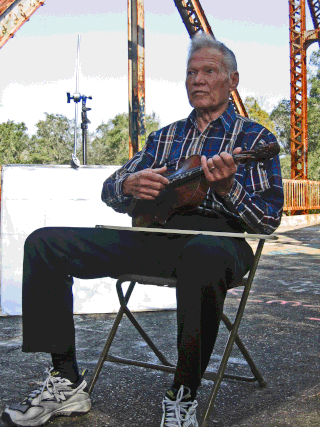
Vassar Carlton Clements was an American jazz, swing, and bluegrass fiddler. Clements has been dubbed the Father of Hillbilly Jazz, an improvisational style that blends and borrows from swing, hot jazz, and bluegrass along with roots also in country and other musical traditions.

Martin Hayes is an Irish fiddler from County Clare. He is a member of the Irish-American supergroup The Gloaming.

Bruce C. Molsky is an American fiddler, banjo player, guitarist, and singer. He primarily performs old-time music of the Appalachian region.
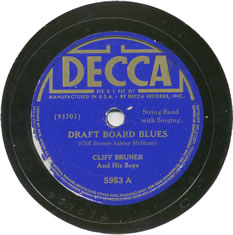
Clifton Lafayette Bruner was a fiddler and bandleader of the Western Swing era of the 1930s and 1940s. Bruner's music combined elements of traditional string band music, improvisation, blues, folk, and popular melodies of the times.

Howard "Louie Bluie" Armstrong was an American string band and country blues musician, who played fiddle, mandolin, and guitar and sang. He was also a notable visual artist and raconteur.

John Paul Gimble was an American country musician associated with Western swing. Gimble was considered one of the most important fiddlers in the genre. He was inducted into the Rock and Roll Hall of Fame in 1999 in the early influences category as a member of Bob Wills and His Texas Playboys.
Buddy Spicher is an American country music fiddle player. He is a member of The Nashville A-Team of session musicians, and is Grammy-nominated. He was nominated as Instrumentalist of the Year by CMA in 1983 and 1985. He was the first fiddler in the "Nashville Cats" series of the Country Music Hall of Fame. He recorded with virtually every major country star of the sixties, seventies, and early eighties, including Faron Young, Johnny Paycheck Little Jimmy Dickens, Reba McEntire, George Jones, Don Williams, Dolly Parton, Crystal Gayle, Loretta Lynn, Bob Wills, Asleep at the Wheel, Don Francisco, Ray Price, Willie Nelson, George Strait, Bill Monroe, David Allan Coe, and Emmylou Harris.
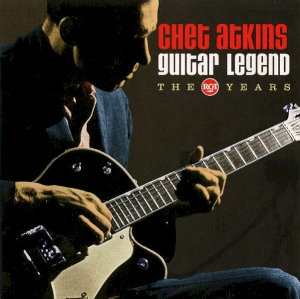
Guitar Legend: The RCA Years is a two-disc compilation recording by American guitarist Chet Atkins. The 50 tracks included here focus on his first recordings in 1947 to the 1977 release Nashville Guitar Quartet.
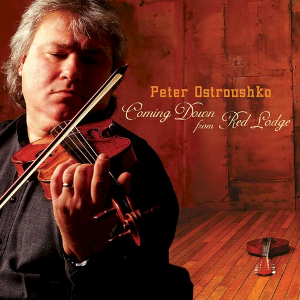
Coming Down from Red Lodge is an album by American musician Peter Ostroushko, released in 2003.
The Melos Ensemble is a group of musicians who started in 1950 in London to play chamber music in mixed instrumentation of string instruments, wind instruments and others. Benjamin Britten composed the chamber music for his War Requiem for the Melos Ensemble and conducted the group in the first performance in Coventry.

Natasha's Waltz is a compilation album of American guitarist Norman Blake, released in 1987. It contains all of the tracks from the vinyl release Original Underground Music from the Mysterious South, along with six tracks from Full Moon on the Farm and two tracks from Rising Fawn String Ensemble. The cover is the same as Original Underground Music from the Mysterious South.
Johnnie Lee Wills was an American Western swing fiddler popular in the 1930s and 1940s.
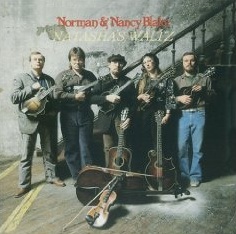
Original Underground Music from the Mysterious South is an album of American guitarist Norman Blake and the Rising Fawn String Ensemble, released in 1982.
Winifred Horan is an American violinist/fiddler of Irish descent. After classical training, she played with the all-female Celtic music ensemble Cherish the Ladies before becoming an original member of the Irish traditional music group Solas.
"Blues fiddle" is a generic term for bowed, stringed instruments played on the arm or shoulder that are used to play blues music. Since no blues artists played violas, the term is synonymous with violin, and blues players referred to their instruments as "fiddle" and "violin".
William Ezell, was an American blues, jazz, ragtime and boogie-woogie pianist and occasional singer, who was also billed as Will Ezell. He regularly contributed to recordings made by Paramount Records in the late 1920s and early 1930s. Ezell was noted by the music journalist Bruce Eder as "a technically brilliant pianist, showing the strong influence of jazz as well as blues in his work".
Archie "Prince" Albert Hunt from Terrell, Texas was an American country blues fiddle player. He was one of the founders of the musical genre later defined as Western swing.












